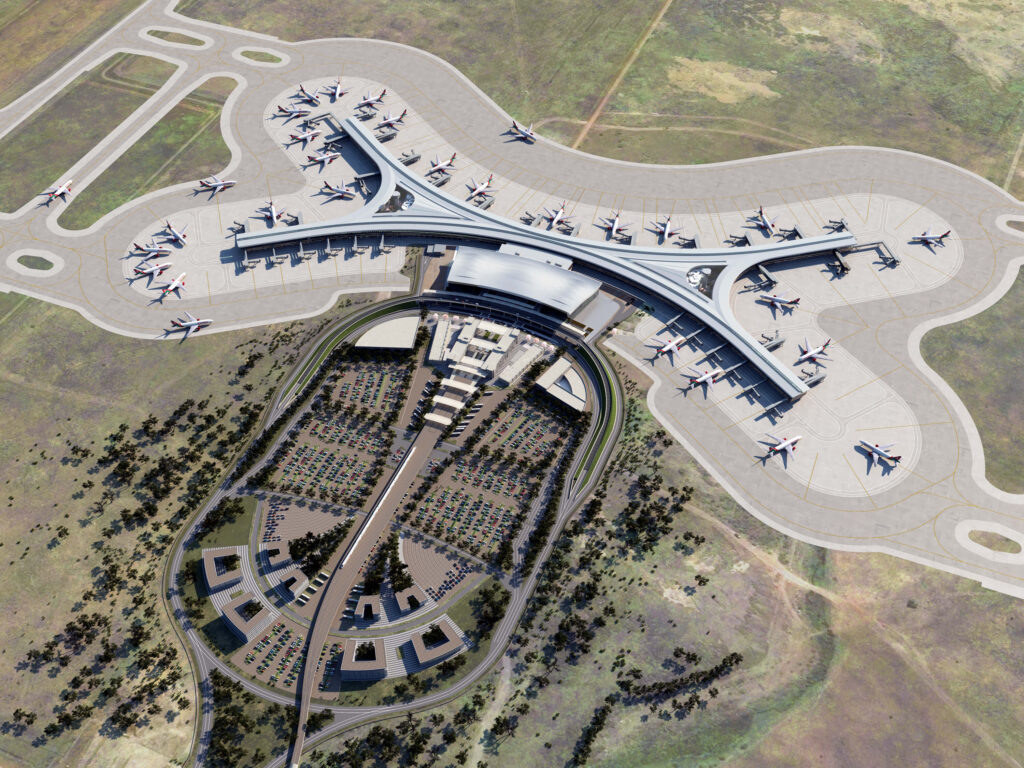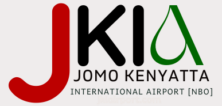Visitors intending to reach the official website should visit kaa.go.ke
As Kenya’s largest and busiest airport, Jomo Kenyatta International Airport (JKIA) plays a critical role in the country’s economy and connectivity. To meet the growing demands of air travel and enhance its position as a global aviation hub, JKIA has embarked on an ambitious expansion project, which includes the development of a Greenfield Terminal. This expansion is part of a broader strategy by the Kenya Airports Authority (KAA) to increase JKIA’s capacity and improve passenger experience.
In this guide, we will explore the key aspects of JKIA’s Greenfield Terminal project, including its features, objectives, timeline, and the potential impact on both domestic and international travel.
Overview of JKIA’s Greenfield Terminal Project
The Greenfield Terminal project is an ambitious plan to significantly expand JKIA’s infrastructure, adding new terminal space to handle increased passenger and cargo traffic. The new terminal will complement the existing terminals, especially as JKIA continues to face rising passenger numbers and larger aircraft.

Key Project Details:
- Location: Adjacent to the current JKIA terminals.
- Terminal Type: The Greenfield Terminal will be an entirely new structure (hence “greenfield”), distinct from existing terminals.
- Passenger Capacity: Designed to increase JKIA’s passenger handling capacity by 20 million passengers per year.
- Construction Size: The terminal will cover approximately 178,000 square meters, making it one of the largest terminal projects in Africa.
- Estimated Cost: The project was initially estimated to cost $653 million.
- Projected Timeline: Though the project was first proposed in 2013, ongoing adjustments have delayed its final completion. As of the latest updates, construction is expected to proceed in the coming years with revised timelines based on funding and contractual processes.
Objectives of the Greenfield Terminal
The Greenfield Terminal project is intended to address several critical challenges and position JKIA as a more competitive global aviation hub:
- Capacity Expansion
- Passenger Growth: JKIA’s current infrastructure is being stretched beyond its capacity, handling over 7 million passengers annually. The new terminal will help JKIA accommodate an additional 20 million passengers per year, addressing future growth needs.
- Cargo Handling: The expansion will also include advanced cargo-handling facilities, ensuring that JKIA can accommodate larger volumes of freight efficiently.
- Improved Passenger Experience
- The new terminal will offer world-class amenities, reducing congestion in existing terminals and improving the overall passenger experience. This includes faster security and check-in processes, more retail and dining options, and additional lounges.
- Enhanced Operational Efficiency
- Air Traffic: The Greenfield Terminal will have additional runways and taxiways, improving air traffic management and minimizing delays. This will support larger aircraft like the Airbus A380 and Boeing 787.
- Seamless Transfers: The terminal is designed with a focus on seamless transit and transfers, especially for international passengers connecting to regional or domestic flights. This will reduce connection times and improve JKIA’s attractiveness as a transfer hub.
- Global Competitiveness
- The development of the Greenfield Terminal is part of Kenya’s plan to position JKIA as a premier aviation hub in Africa. The modern infrastructure will enhance JKIA’s ability to compete with other key regional airports such as Addis Ababa Bole International Airport and Johannesburg OR Tambo International Airport.
Key Features of the Greenfield Terminal
The Greenfield Terminal is envisioned as a state-of-the-art facility that will transform JKIA’s capacity, service offerings, and overall functionality. Some of the standout features of the terminal include:
1. Passenger Terminal Building
- Four-Level Terminal: The Greenfield Terminal will feature a four-level terminal building, incorporating international arrivals, departures, and domestic services. The terminal will also accommodate two-level baggage handling areas and separate spaces for passenger check-in and security checks.
- 24 Contact Gates: The terminal will include 24 contact gates capable of handling large, wide-body aircraft such as the Airbus A380 and Boeing 747.
- 30 Remote Gates: For smaller aircraft and regional flights, the terminal will have 30 remote gates to increase boarding efficiency.
2. Runways and Taxiways
- The project will include the construction of a second runway parallel to the existing runway, allowing for simultaneous take-offs and landings. This will reduce air traffic congestion and delays, making JKIA one of the most efficient airports in the region.
- Expanded Taxiways: To complement the new runway, additional taxiways will be built, ensuring smoother and faster aircraft movement on the ground.
3. Modern Retail and Dining Spaces
- A key feature of the Greenfield Terminal will be the inclusion of high-end retail outlets and dining options. These will include duty-free shopping, luxury brands, and a wide range of restaurants catering to international and local travelers.
- Lounges: The terminal will have several VIP and business-class lounges, offering passengers premium services and comfort before their flights.
4. Baggage Handling System
- The terminal will feature an advanced baggage handling system (BHS), designed to improve efficiency and minimize baggage mishandling. This system will support faster baggage sorting, loading, and unloading processes, significantly reducing wait times for passengers.
5. Smart Airport Technology
- The Greenfield Terminal will integrate smart technology to enhance the passenger experience and operational efficiency. This includes self-service check-in kiosks, biometric security systems, and automated boarding gates.
- Real-Time Flight Information Systems: Digital signage and real-time flight information displays will be strategically placed throughout the terminal, providing passengers with up-to-the-minute flight status updates.
6. Parking and Ground Transportation
- To accommodate the increased passenger traffic, the project will include expanded parking facilities, capable of handling thousands of vehicles, including designated parking for electric vehicles.
- Public Transportation Hub: The terminal will include a ground transportation hub for buses, taxis, and shuttles, ensuring easy access to and from the airport. The new design will also incorporate a future connection to Nairobi’s commuter rail system.
Environmental and Sustainability Features
As part of its commitment to sustainable development, the Greenfield Terminal will integrate several environmentally friendly features aimed at reducing the airport’s carbon footprint:
- Energy Efficiency
- The terminal will utilize solar panels to generate renewable energy for lighting and other systems. This is part of a broader strategy to make JKIA more energy-efficient and eco-friendly.
- Water Conservation
- Water harvesting systems will be installed to collect and recycle rainwater for use in restrooms, cooling systems, and landscaping. Additionally, the terminal will feature water-efficient fixtures to minimize consumption.
- Waste Management
- An advanced waste management system will be implemented, ensuring the proper segregation and recycling of waste materials. The airport plans to reduce landfill waste through recycling initiatives.
Timeline and Current Status
The Greenfield Terminal project has faced delays since its initial announcement in 2013 due to various contractual and funding challenges. However, the Kenya Airports Authority (KAA) has reaffirmed its commitment to the project, and revised timelines are under consideration. The terminal remains a priority project for Kenya’s long-term vision of becoming a world-class aviation hub.
Revised Project Timeline:
- Groundbreaking: Although the initial groundbreaking took place in 2014, construction has been postponed multiple times. New timelines will likely be announced following the completion of the contract review process.
- Expected Completion: While the original completion was slated for 2020, the revised timeline projects completion by 2027, subject to changes in funding and project scope.
Impact on Kenya and the Region
Once completed, the Greenfield Terminal will significantly impact Kenya’s aviation industry and the wider East African region:
- Boost to Tourism: With its increased capacity, JKIA will be able to handle more flights, boosting Kenya’s tourism industry and facilitating easier access to key destinations such as the Maasai Mara, Amboseli, and Mombasa.
- Regional Hub: The expansion will solidify Nairobi’s position as a major aviation hub for Africa, competing with other airports like Addis Ababa and Johannesburg.
- Economic Growth: By facilitating trade and improving cargo handling, the terminal will contribute to Kenya’s economic growth and provide more job opportunities for local communities.
- Enhanced Travel Experience: Passengers will benefit from shorter wait times, improved services, and a more modern travel experience.
Conclusion
The Greenfield Terminal project is a transformative step for Jomo Kenyatta International Airport and will have a significant positive impact on Kenya’s aviation industry, positioning Nairobi as a major global aviation hub. Once completed, the terminal will offer increased capacity, modern facilities, and improved operational efficiency, meeting the needs of the growing passenger and cargo traffic in the region. As the project progresses, it is set to elevate JKIA’s standing as a leading airport in Africa, offering world-class services and connectivity.
